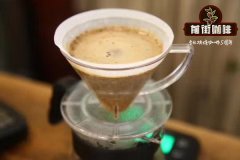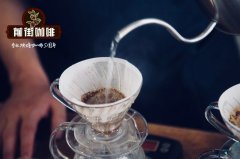Why is the flavor and taste of hand-brewed coffee in Kenya Gakundu Cooperative so sour?

Professional coffee knowledge exchange more coffee bean information please follow the coffee workshop (Wechat official account cafe_style)
This AB coffee is produced by many small farmers who are members of Gakundu farmers co-co-Society (FCS) and are responsible for delivering the coffee to the Gakundu coffee factory (in Kenya, the laundry station / wet mill is known as Gakundu Coffee Factory). The factory is located in Ngandori, west of Ngandori, Kenya, north of the town of Muton Duri.
Gakundu is one of four factories operated by FCS (the other three are Gakui, Gichugu and Kamviu). It is also one of the earliest factories of the group, established in 1964. The entire FCS has about 3000 active members and about 1200 members send coffee cherries to the Gakundu factory. The advantageous position of the Gakundu factory certainly helps. Located at the foot of Mount Kenya, it has amazing scenery on clear days, perfect soil and microclimate provide conditions for high-quality production and provide a valuable source of water for the famous Lupingaz River. The river was formed when Mount Kenya was an active volcano and is characterized by hard black volcanic rock and cool clean water flowing from Mount Kenya.
The washing station serves several towns in this area. The members are all small farmers with half a hectare or less of land. Coffee is usually grown in only a small part of the "shamba" (farm), and farmers grow other crops, such as carrots, bananas and fruits, to help support their families.
Gakundu is helped by the Coffee Management Service Center (CMS), which directly helps producers improve productivity and quality through training and education programs. Their goal is to ensure sustained industrial growth by establishing transparent and trust-based relationships with minority shareholder producers. By helping them improve their quality, CMS in turn increases the premiums that producers can pay, and ultimately has a positive impact on their quality of life.
As part of the project, CMS provides producers with upfront financing for tuition fees and agricultural inputs. Factory managers are trained every year, and some members of cooperatives are "extension farmers" who provide small farmers with good agricultural practices (gap). This extension service has had a positive impact on the quality of coffee from Gakundu, as farmers have been trained to better understand the impact of fertilization, pruning and quality-driven harvesting techniques on the price of their coffee at auction and in transactions with direct buyers.
At present, the factory also provides farmers with credit and cash advances as incentives.
Therefore, it is not surprising that the Gakundu wet grinding process adheres to a strict quality-driven method. All the coffee fruits are picked by hand and sent to the factory on the same day, where they are carefully sorted. Factory staff oversees the process and immature or damaged cherries will not accept "cherry clerks"-one of the most important harvests, he keeps a detailed record of how much coffee each producer provides on any given day (so how much payment is due once the coffee has been sold). Any rejected coffee will be brought home again, and farmers need to find a place to dry (usually in the yard tarp) to deliver only low-quality "Mbuni" at the end of the season-natural process coffee, at a low-income price. As a result, farmer members are encouraged to pick and deliver only the most mature cherries they can.
After weighing and recording, the weight of the delivery and the identity of the farmer are recorded in the register of the cherry clerk, and the cherries are put into the hopper for pulping. Pulping will not begin until a sufficient number of cherries have been received.
The pulped cherries are sent to the factory's fermentor and fermented for 12 to 48 hours according to the ambient temperature at that time. After that, the coffee is completely washed away from all traces of mucus, during which time it will be graded. The coffee is then either sent to the factory's elevated drying bed to dry or soaked in recycled water for 24 hours, depending on whether there is space on the factory bed (there is often a backlog during peak seasons). The coffee dries slowly over a period of 2 to 3 weeks, during which time the coffee turns regularly and covers the lid at the hottest time of the day.
Some of the problems faced by farmers are the low yield and relatively high input costs caused by the losses caused by diseases and insect pests. Many companies are unable to grow disease-resistant varieties and are at risk of being squeezed out of the market as production declines. Perhaps it is not surprising that many young people in the region do not see the future of growing coffee. This is a challenge facing most parts of Kenya and a challenge that cooperatives like Gakundu must face in the future.
END
Important Notice :
前街咖啡 FrontStreet Coffee has moved to new addredd:
FrontStreet Coffee Address: 315,Donghua East Road,GuangZhou
Tel:020 38364473
- Prev

Peruvian coffee producing area Peruvian hand-made coffee beans recommend why Peruvian coffee is bitter
Professional coffee knowledge exchange more information about coffee beans Please follow the coffee workshop (Wechat official account cafe_style) Mercanta sends a member to Peru every year to select the best new crops to join our supply. This 2019 plot is produced by many farmers who live in Cutervo.
- Next

Kenya Muchana Manor Coffee can you introduce Kenya Muchana Manor Coffee?
Professional Coffee knowledge Exchange more information on coffee beans Please pay attention to the Coffee Workshop (Wechat official account cafe_style) after World War II, the situation in the far East is still unstable and the future of foreign investment is quite uncertain. A French group, which has a large stake in Malaysian palm oil and rubber plantations, has decided to seek agricultural investment in East Africa to guard against Asian disadvantages.
Related
- Beginners will see the "Coffee pull flower" guide!
- What is the difference between ice blog purified milk and ordinary milk coffee?
- Why is the Philippines the largest producer of crops in Liberia?
- For coffee extraction, should the fine powder be retained?
- How does extracted espresso fill pressed powder? How much strength does it take to press the powder?
- How to make jasmine cold extract coffee? Is the jasmine + latte good?
- Will this little toy really make the coffee taste better? How does Lily Drip affect coffee extraction?
- Will the action of slapping the filter cup also affect coffee extraction?
- What's the difference between powder-to-water ratio and powder-to-liquid ratio?
- What is the Ethiopian local species? What does it have to do with Heirloom native species?

